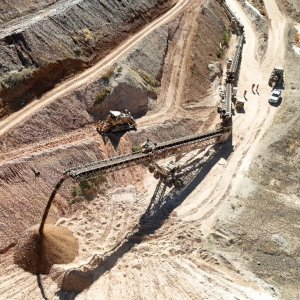Ratings as a Stepping Stone to Increased Financing

STORY INLINE POST
In August 2017, Fitch Ratings revised the outlooks on Mexico’s foreign and local currency long-term IDRs to Stable from Negative, while affirming the IDRs at a rating of BBB+. But the agency’s long-term outlook for Mexico’s growth remains relatively positive, says Carlos Fiorillo, Managing Director of Fitch Ratings Mexico.
“The main drivers of our change in outlook were the reduced downside risks to the country’s growth outlook and expected stabilization of the public debt burden,” says Fiorillo. Fitch believes that the risk of a disruptive scenario that undermines Mexico’s export competitiveness and hurts potential growth or jeopardizes overseas remittance flows is diminishing. But Fiorillo warns that the country’s weaknesses must also be taken into account. “Mexico faces limited fiscal flexibility to confront an unforeseen change given its increased debt burden and modest fiscal buffers,” he says. “We will continue to monitor fiscal developments and implementation of structural reforms under the new administration to assess Mexico’s growth and fiscal profiles.”
Mexico is a top market for Fitch, a leading Credit Ratings Agency (CRA) in Latin America with more than 20 years in the Mexican market, one of its biggest in the region, alongside Brazil. The country’s investment is the secondbest in Latin America after Chile but in terms of country size, Mexico’s potential is probably one of the best in the region, Fiorillo says. “We have not only been trying to gain global coverage but also local presence in key Latin American markets.” “This means in Mexico, we want to increase our presence among companies that can seek local ratings or cross-border ratings.”
Infrastructure remains an opportunity not only for Mexico but across the region. “Infrastructure spending should account for 5 percent of GDP annually and many countries are far from reaching this objective,” Fiorillo says. “As a result, there is a real need for financing vehicles for infrastructure investment.”
Infrastructure projects are divided by sector, which Fitch then divides into subsectors like toll roads, ports, airports, power plants and social projects. Normally, these projects seek financing from capital markets so it is Fitch’s responsibility to assign a rating to the debt those companies seek. “I do not believe there is one particularly important project but in terms of our subsectors, we see big demand for toll roads and transportation projects,” says Fiorillo. “Obviously, in the energy and oil sector, we anticipate a lot of new projects entering the market since the CNH licensing rounds and PEMEX farm-outs have attracted a great deal of foreign investment.”
He believes the financial vehicles available to fund projects are relatively sophisticated but are failing to take advantage of opportunities to access funds from capital markets. “These vehicles still lack participation from the capital market directly and that is where we see more infrastructure financing opportunities,” he says. “There are certain projects that can go directly to the capital markets and issue bonds locally and this could mean the projects will be developed faster.”
Ratings are essentially a function of how CRAs measure and evaluate the risk a project may present. Of course, certain projects will present more risk than others. “Greenfield projects tend to have more risk related to permits, environmental studies and construction development than others,” Fiorillo explains. “One way to mitigate this risk is for the government to implement a strong legal framework and assure the private sector that PPP projects are well-managed on the public side.”
The way to create stability, according to Fiorillo, could be creating a National Infrastructure Agency, similar to the model in Colombia. In Mexico, infrastructure projects are assigned to the relevant ministry, he says. For example, a toll road project would be assigned to SCT and it would be the responsibility of the ministry to organize the PPP. But Fiorillo argues that the ministries have many other priorities and are not necessarily able to assign the appropriate amount of time to these processes. “The creation of an agency with the exclusive mandate of developing infrastructure projects would be useful in fomenting a forward-looking infrastructure plan that is not subject to governmental administrations,” he says.
One thing the government is doing well is making efforts to reassure investors with a strong macroeconomic framework and stable governmental policies, according to Fiorillo. He believes that the central bank, Banxico, and policymakers have been managing the context of currency depreciation and inflationary pressures well. This stability needs to continue to keep attracting investors.
“Transparency has always been a challenge for the Latin American region and from our point of view, ratings offer a good way to be more transparent to the market,” says Fiorillo. “We believe there is an advantage to accessing ratings not only for the major companies but also for medium-sized enterprises.” These midsized companies may be privately financed but their growth trajectory may involve accessing capital markets in the future, which is why seeking a rating from a CRA like Fitch would be appealing to them.
Fiorillo emphasizes that a company does not necessarily need to have access to capital markets to be rated by CRAs like Fitch. “There is a correlation because publiclylisted companies must adhere to strict governance standards and this wealth of information makes it easier for Fitch to apply a rating,” he says. The CRA’s next challenge is to attract second-tier companies like familyowned businesses. These companies require higher standards of governance to list on a stock exchange but the transparency required by a credit rating could open the door for them.
Moreover, a rating can also communicate to a third party how strong the company is as an investment and attract private capital, says Fiorillo. “When a company obtains a rating, particularly a midsized company, this creates opportunities for the banking sector to offer alternative financing options,” he says. The company could then qualify for an international rating, whereby Fitch compares the company on a global scale, opening more doors for investor scope. A Mexican rating, says Fiorillo, can be a stepping stone to a more global scope of financing options.























